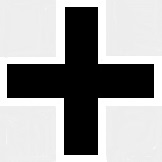Corgi AA38902 German Fokker D VII Fighter - Ernst Udet, Jasta 4, June 1918 (1:48 Scale)
"For seconds, I forgot that the man across from me was Guynemer, my enemy. It seems as though I were sparring with an older comrade over our own airfield."
- Ernst Udet, recounting his engagement with famed French WWI flier, George Guynemer
 The Fokker D.VII was a German World War I fighter aircraft designed by Reinhold Platz of the Fokker-Flugzeugwerke. Germany produced around 1,700 D.VII aircraft in the summer and autumn of 1918. In service, the D.VII quickly proved itself superior to existing Allied fighters, leading to a second "Fokker Scourge." The Armistice ending the war specifically required Germany to surrender all D.VIIs to the Allies at the conclusion of hostilities; nevertheless, the aircraft saw continued widespread service with many other countries in the years after World War I.
The Fokker D.VII was a German World War I fighter aircraft designed by Reinhold Platz of the Fokker-Flugzeugwerke. Germany produced around 1,700 D.VII aircraft in the summer and autumn of 1918. In service, the D.VII quickly proved itself superior to existing Allied fighters, leading to a second "Fokker Scourge." The Armistice ending the war specifically required Germany to surrender all D.VIIs to the Allies at the conclusion of hostilities; nevertheless, the aircraft saw continued widespread service with many other countries in the years after World War I.
Fokker's chief designer, Reinhold Platz, had been working on a series of experimental planes, the V-series, since 1916. These planes were characterized by the use of cantilever wings, first developed during Fokker's government-mandated collaboration with Hugo Junkers. Junkers had originated the idea in 1915 with the first all-metal aircraft, the Junkers J 1, nicknamed Blechesel ("Sheet Metal Donkey" or "Tin Donkey"). The resulting thick-sectioned cantilever wing gave greater lift and more docile stalling behavior than conventional thin wings.
Late in 1917, Fokker built the experimental V.11 biplane, fitted with the standard Mercedes D.IIIa engine. In January 1918, Idflieg held a fighter competition at Adlershof. For the first time, frontline pilots would directly participate in the evaluation and selection of new fighters. Fokker submitted the V.11 along with several other prototypes. Manfred von Richthofen flew the V.11 and found it tricky, unpleasant, and directionally unstable in a dive. In response to these complaints, Fokker's chief designer and engineer, Reinhold Platz, lengthened the rear fuselage by one structural bay, and added a triangular fixed vertical fin in front of the rudder. Upon flying the modified V.11, Richthofen praised it as the best aircraft of the competition. It offered excellent performance from the outdated Mercedes engine, yet it was safe and easy to fly. Richthofen's recommendation virtually decided the competition, but he was not alone in recommending it. Fokker immediately received a provisional order for 400 production aircraft, which were designated D.VII by Idflieg.
Fokker's factory was not up to the task of supplying the entire air force, so their rivals at Albatros and AEG were directed to build the D.VII under license, though AEG did not ultimately produce any aircraft. Because Fokker did not use production plans for their designs, they simply sent a completed D.VII airframe for Albatros to copy. Albatros paid Fokker a five percent royalty for every D.VII built under license. Albatros Flugzeugwerke and its subsidiary, Ostdeutsche Albatros Werke (OAW), built the D.VII at factories in Johannisthal (designated Fokker D.VII (Alb)) and Schneidemahl (Fokker D.VII (OAW)), respectively. Some parts were not interchangeable between aircraft produced at different factories, even between Albatros and OAW.
Albatros soon surpassed Fokker in the quantity and quality of aircraft produced. Despite the massive production program, under 2,000 D.VII aircraft were delivered from all three plants, with the most commonly quoted figure being 1,700.
The Austro-Hungarian company MAG (Ungarische Allgemeine Maschinenfabrik AG - Hungarian General Machine Company) commenced license production of the D.VII powered by Austro-Daimler engines late in 1918, production continuing after the end of the war, with as many as 50 aircraft completed.
Pictured here is a 1:48 scale replica of a German Fokker D VII fighter that was piloted by Ernst Udet, who was attached to Jasta 4 during June 1918. Comes in a unique cherry-colored "lozenge" camouflage pattern.
Sold Out!
Dimensions:
Length: 6-inches
Wingspan: 7-1/2-inches
Release Date: February 2010
Historical Account: "Aced Out" - Colonel General Ernst Udet was the second-highest scoring German flying ace of World War I. He was one of the youngest aces and was the highest scoring German ace to survive the war (at the age of 22). His 62 victories were second only to Manfred von Richthofen, his commander in the Flying Circus.
Udet's success attracted attention for his skill, earning him an invitation to join the Flying Circus, Jagdgeschwader 1, an elite unit of German fighter aces under the command of the famed Red Baron Manfred von Richthofen. Richthofen drove up one day as Udet was trying to pitch a tent in Flanders in the rain. Pointing out that Udet had 20 kills, Richthofen said, "Then you would actually seem ripe for us. Would you like to?"
Of course Udet would. After watching him down an artillery spotter by frontal attack, Richthofen gave Udet command of Jasta 11, von Richthofen's own former squadron command. The group commanded by Richthofen also contained Jastas 4, 6 and 10. Udet's enthusiasm for Richthofen was unbounded. Richthofen demanded total loyalty and total dedication from his pilots, cashiering immediately anyone who did not give it. At the same time he treated them with every consideration. When it came time to requisition supplies, he traded favors for autographed photos of himself that read: "Dedicated to my esteemed fighting companion." Udet remarked that because of the signed photographs, " ... sausage and ham never ran out."


